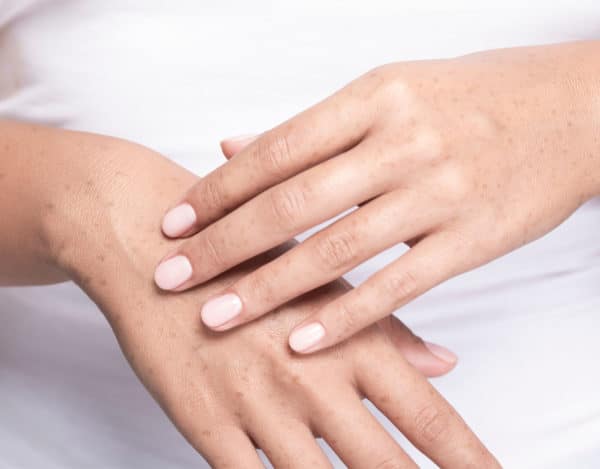

Psoriasis is the medical term for psoriasis. It is a genetic, non-contagious, mostly chronic skin disease. Typical symptoms of classic psoriasis are sharply defined redness with scaling and palpable elevation of the skin, which typically occur on the elbows, on the scalp, in the area of the knees and above the sacrum. In most cases, these skin lesions are chronic and stable over long periods of time. In addition to pure skin involvement, there is also psoriatic arthritis with inflammatory joint pain.
In children and rarely also in adults, the so-called psoriasis guttata occurs in small spots that suddenly appear all over the body. This is usually triggered by infections and only exists temporarily in this form.
A subtype of psoriasis that occurs alone, but also in combination with the classic psoriasis described above, is inverse psoriasis, which causes disturbing skin changes and itching, especially in body folds and in the genital area.
Psoriasis is genetic, so other people in the family are often affected. However, not everyone who carries the genetic predisposition also develops psoriasis. The genetic predisposition usually requires further internal and external factors. Known triggers are infections, stress and mechanical strain, also overweight can negatively influence the severity of psoriasis.
Psoriasis is caused by a defective overfunction of the immune cells in the skin. This overfunction causes a visible inflammation and causes an increased cell division of the skin cells. This results in severe thickening of the skin, which can also be felt when touching the affected skin regions. Due to this overproduction, the skin cells migrate too quickly to the surface of the skin and are disturbed in their ability to cornify, which is why the large, silvery-white scales are formed.
Chronic plaque psoriasis is not curable, but can now be treated very well with the goal of (almost) completely symptom-free skin.
External therapies:
Vitamin D derivatives such as calcipotriol in the form of creams or ointments.
Combination of calcipotriol with corticosteroid in the form of gel, cream, foam or ointment
Light therapy: UVB or UVA (prior bath in light-sensitizing psoralen)
Internal therapies:
Fumaric acid ester in tablet form
Methotrexate in the form of tablets or abdominal injections
Apremilast in tablet form
Ciclosporin A (only in individual cases)
Biologics (anti-TNF-alpha, anti-Il12/23, anti -IL17, anti-23)
Proper skin care is an integral part of any effective therapy for psoriasis. Since mechanical triggering is common, good skin care with creams and lotions containing glycerin and urea (urea) can mitigate further mechanical stress.
Ideally, showers should not be too long and should be taken with lukewarm water and skin-neutral, lipid-replenishing cleansing products should be used. Products with urea and glycerin are suitable for this purpose. For further skin care, products should be used in psoriasis that compensate for the skin’s lack of moisture.